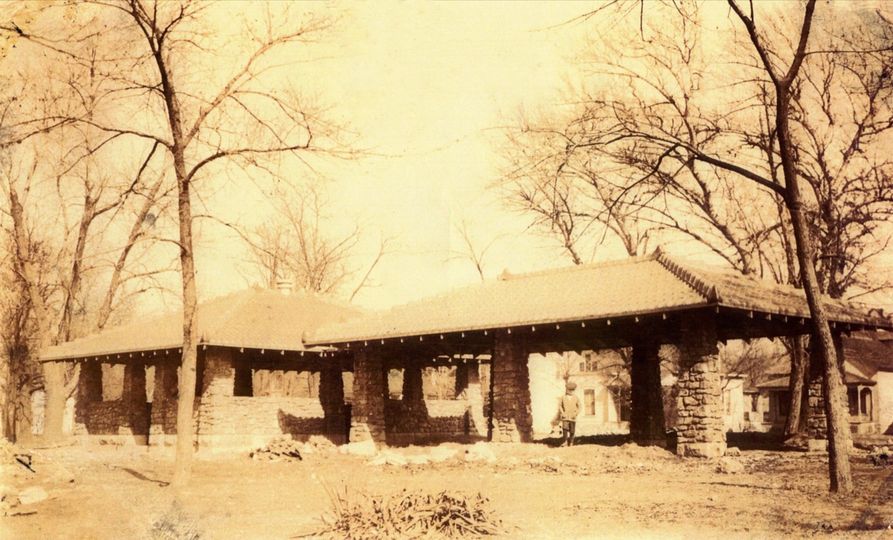The short answer, says Cora Scott, spokeswoman for the city, is that the small stone building I asked her about was once a park bathroom.
I wasn't expecting that.
And this park bathroom was once in Long Memorial Park, which ran along the north side of today's Chestnut Expressway, east of Historic City Hall (at Boonville and Chestnut Expressway.)
I didn't know that, either.
The Springfield-Greene County Health Department and the police station are located on the long-gone Long Park.
The little stone building that caught my eye is between Historic City Hall and the Busch Municipal Building.

Created to honor WWI vets, drivers from across America once pitched a tent
The next thing I learned is that Long Memorial Park was created after World War I to honor Springfield soldiers and sailors, according to a May 20, 2022 post by Richard Crabtree on his Facebook page Springfield, Missouri History, Landmarks & Vintage Photography.
It soon became a camping site for tourists either driving through or who wanted to spend some time in Springfield. Over 3,000 visitors used it in the summer of 1924.
I suspect some of them were traveling Chicago to Los Angeles along the roadway that would become Route 66 in 1926.
The City Council, park board and chamber of commerce loved the idea of the free campsite. Visitors could pitch a tent for up to two nights.
Two pavilions and a keeper's lodge
According to local historian Crabtree, Byron Crutcher, credit manager of the G.D. Milligan Grocer Company, bought the land and then sold it to the park board. It's named after Max Long, a son of J. L. Long, a friend of Crutcher.
According to a July 23, 1924 story in the Springfield Republican:
“A total of 3,298 tourists used Long Tourist park here from May 1 to July 15, as compared to 1,433 tourists in the same period last year, when the park was opened.”
A 1922 news story stated that the park would have a cooking pavilion and an eating pavilion. The park board would install city water and put a fence around the tract; it would also provide the person who served as park keeper during tourist season. The park keeper would have a “lodge.”

‘Many little fires dotting the lawn'
Lucile Morris Upton, a reporter for the News-Leader for 58 years, wrote a column for the Sunday News & Leader called “The Good Old Days: Fifty Years Ago in Springfield.”
She died in 1992 at the age of 94.
Her Oct. 8, 1972 column looked back on the tourist camp, quoting from a story years prior:
“Thirteen cars, each with two to five persons, were at the free tourist camp at Long Memorial Park back of the post office in one night this week.
“The many little fires dotting the lawn, together with the softened glow from kerosene lamps inside the tents, gave the place a cheerful and homey air,” said The Leader.
“Licenses on the machines show they came from Michigan, Pennsylvania, Louisiana, Kansas, North Dakota and other states whose citizens have heard of the summer glories of the Ozarks and have come to see.
“The scene at the park is a constantly shifting one. Few cars remain there more than two days, as it is not a permanent camping place.
“Without this regulation, the small Long park would be constantly crowded.”
Susan Croce Kelly, a former News-Leader reporter and one of Lucile's great-nieces, has written a book about her, which has just been published.
“Newspaperwoman of the Ozarks: The Life and Times of Lucile Morris Upton” can be ordered on Amazon.
It became a playground, then an athletic field for high school
By the 1930s, according to Crabtree, the tourist park was no more and the parcel was converted to a park with a playground.
In the late 1930s, Springfield High School used the land for athletics.
By the 1940s, there was a movement to make it the site of Springfield Art Museum. That did not happen.
Now, the little stone building sits in a city parking lot, surrounded by storage containers for bicycles.
The city's planning department might use it for storage, but it needs rehabilitation first, says city spokeswoman Scott.
This is Pokin Around column No. 115.

